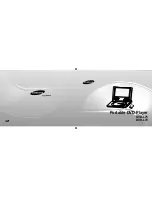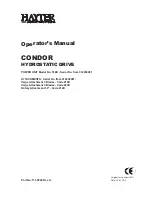
Page 12 — English
DANGER:
Carbon Monoxide.
Using a generator indoors CAN KILL
YOU IN MINUTES.
Generator exhaust contains high levels of carbon mon-
oxide (CO), a poisonous gas you cannot see or smell. If
you can smell the generator exhaust, you are breathing
CO. But even if you cannot smell the exhaust, you could
be breathing CO.
Never use a generator inside homes, garages, crawl-
spaces, or other partly enclosed areas. Deadly levels
of carbon monoxide can build up in these areas. Us-
ing a fan or opening windows and doors does NOT
supply enough fresh air.
ONLY use a generator outdoors and far away from
open windows, doors, and vents. These openings
can pull in generator exhaust.
Even when you use a generator correctly, CO may
leak into the home. ALWAYS use a battery-powered or
battery-backup CO alarm in the home.
If you start to feel sick, dizzy, or weak after the generator
has been running, move to fresh air RIGHT AWAY. See
a doctor. You could have carbon monoxide poisoning.
DANGER
:
Failure to properly ground generator can result in elec-
trocution, especially if the generator is equipped with a
wheel kit. National Electric Code requires generator to be
properly grounded to an approved earth ground. Call an
electrician for local grounding requirements.
WARNING
:
Do not allow familiarity with this product to make you
careless. Remember that a careless fraction of a second
is sufficient to inflict serious injury.
WARNING
:
Do not use any attachments or accessories not
recommended by the manufacturer of this product. The
use of attachments or accessories not recommended
can result in serious personal injury.
APPLICATIONS
This generator is designed to supply electrical power for
operating compatible electrical lighting, appliances, tools,
and motor loads.
bEFORE OPERATING THE UNIT
Only use OUTSIDE and far away from windows, doors,
and vents.
NEVER use inside a home or garage, EVEN IF doors and
windows are open.
Always position the generator on a flat firm surface.
SPECIAL REQUIREMENTS:
There may be General or State Occupational Safety and
Health Administration (OSHA) regulations, local codes or
ordinances that apply to the intended use of the generator.
Please consult a qualified electrician, electrical inspector, or
the local agency having jurisdiction:
In some areas, generators are required to be registered
with local utility companies.
If the generator is used at a construction site, there may
be additional regulations which must be observed.
CHECKING/ADDING LUbRICANT
See Figure 3.
NotiCe:
Attempting to start the engine before it has been properly
filled with lubricant will result in equipment failure.
Engine lubricant has a major influence on engine perfor-
mance and service life. For general, all-temperature use,
SAE 10W-30 is recommended. Always use a 4-stroke motor
lubricant that meets or exceeds the requirements for API
service classification SJ.
NOTE:
Non-detergent or 2-stroke engine lubricants will
damage the engine and should not be used.
Unscrew the lubricant cap/dipstick and remove.
Wipe dipstick clean and re-seat in hole; do not re-thread.
Remove dipstick again and check lubricant level. Lubri-
cant level should fall between the hatched areas on the
dipstick.
If level is low, add engine lubricant until the fluid level rises
to the upper portion of the dipstick.
Replace and secure the lubricant cap/dipstick.
OPERATION
















































